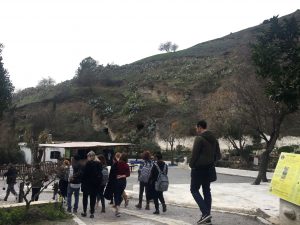 |
| Touring Sacromonte with Jorge and the early start crew! |
First things first, a bit of history!
The Gitano population originally is from Northern India, but began to migrate west around 2,500 years ago. From there, they spread through the Middle East, Northern Africa, and across Europe. By the time the Catholic monarchs came to power in Spain (the mid-1400s), the Gitano population had a well-established presence in here as well. Gitano areas of towns and cities today are oftentimes separated from the rest of the population, partially due to historical discrimination and partially because the traditionally nomadic Gitano population has maintained its own language and culture.
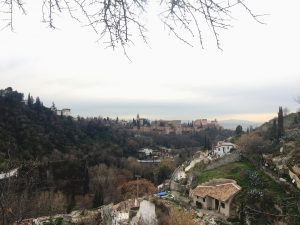 |
| The Sacromonte neighborhood is known for its hillsides dotted with caves. |
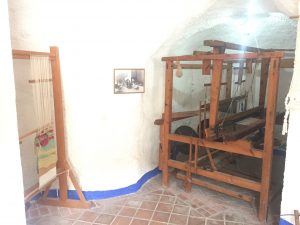 |
| The Gitano people are masters at artisan crafting, and historically were known for making beautiful tapestries, ceramics, and woven baskets. |
In Granada, Sacromonte is the traditional Gitano neighborhood in the city. Here, the oldest of houses are 100% cave, dug deep into the side of the rocky foothills of the Sierra Nevada Mountains, some of which you can tour at the Museo Cuevas Sacromonte. Gitanos have lived here for hundreds of years, and are known for their beautiful artisan tapestries, baskets, ceramics, and last but not least, flamenco.
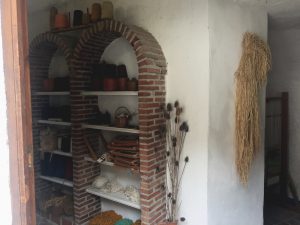 |
| Different colors of dyed wool for weaving tapestries and blankets. |
Flamenco is a genre of music genuinely unique from all others. Usually performed in small groups with a guitarist, singer, percussion player, and a few dancers, it’s known for being hauntingly beautiful and filled with passionate emotions. What sets flamenco apart from any other music in the world is its combination of musical styles accumulated from all over the world. In the same song, you hear the influence of the Middle East, Northern Africa, and traditional Andalucí music, and oftentimes accompanied by folk styles from whatever region of Spain you find yourself in.
 |
| Every flamenco show tells a different story, |
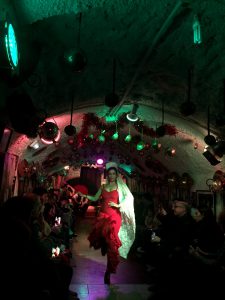 |
| but the key elements are all there. The dress, the veil, the fan, all make for an incredible show. |
The Gitano culture is another illustration of the immense cultural variety in Spain, all of which are continually influencing one another. It’s truly incredible to watch and learn about, and it's just one more reason to love this country.
Megan V.L. is the Spring 2018 MOJO Blogger in Granada, Spain. She is currently a Junior studying Political Science & Spanish at University of Tennessee.







